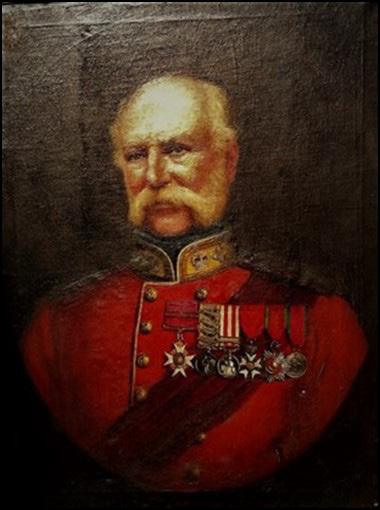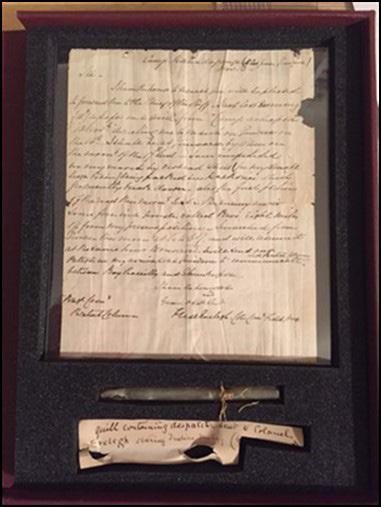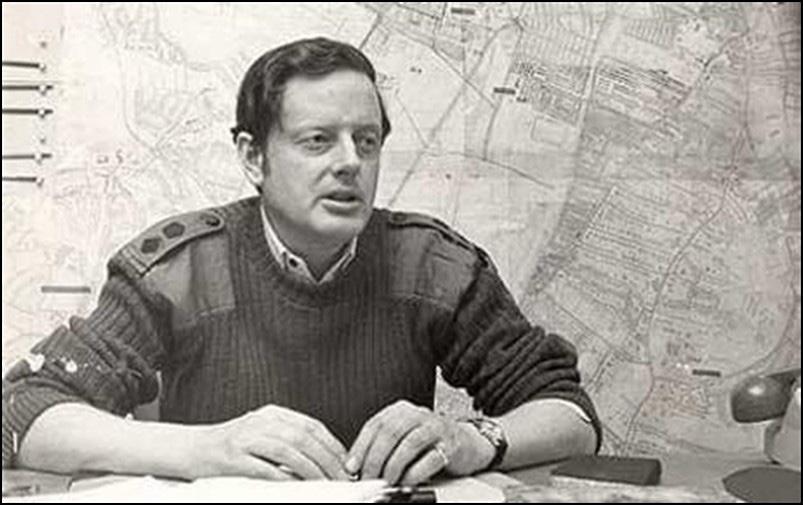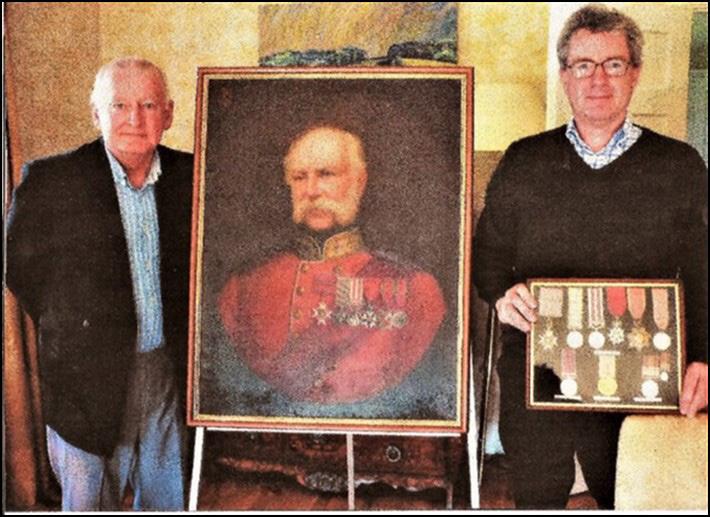
10 minute read
A Crimean Veteran Returns Home to his Medals and his Family
A Crimean Veteran Returns Home to his Medals and his Family
By Keith Smith
Advertisement
Being very much an amateur collector and researcher, I have thought myself lucky at times to be able to re-unite historic family items with the current descendants of those originally involved. I once owned a Military General Service Medal of a 13th Light Dragoon, who had served in the Peninsular War and Waterloo. David Westall was born in rural Oxfordshire but after meeting a girl on Tyneside (during a recruiting drive after Waterloo) he left the army (without a pension) and moved to North Shields with his new wife. Here he became a successful coal merchant, although I do wonder about the undoubted clash of regional accents! He lived to the age of 87 and made the news in the local press on his death in 1873. My research led to the discovery that one of his Great Grandchildren (Robert Westall) in the 1970’s had become a very successful children’s author. Sadly he had died in 1993 and his only child had been killed earlier in a motorcycle accident. There is at least one street in the area named after him. It looked as if my investigations had come to an end. I wanted to know if his Waterloo medal still existed somewhere. Then out of the blue I was contacted by a direct descendant, who knew less about the old veteran than I did. What was clear was that it was not known how or when the MGS medal went out of the family and the same with the Waterloo award, which has never been located. He asked if he could have it back for the family. In these circumstances I was happy to return it to its rightful home.

Detail of painting of Frederick Charles Evelegh and the despatch rolled up and hidden in quill
Anyway on to subjects Crimean. You will probably recall the Sir George de Lacy Evans saga. Basically I purchased, from a south coast auction house, an oil painting described as ‘Officer of Victorian School’. My main interest in the sale was a portrait miniature; I only by chance came across the portrait we now refer to. I didn’t see either before the sale but left bids on the book. I was top bidder on both, and rather unexpectedly the oil painting was mine as well, even though my bid was lower than I expected the piece to have achieved. Something when looking at the internet picture from the saleroom rang a bell with me. My wife was not too pleased when we picked the items up, as the larger painting was somewhat distressed. I did some research and it was confirmed on the BBC Antiques Roadshow as being by Richard Buckner and was of Sir George de Lacy Evans in 1855. To save it being exported after total disinterest from our own national institutions, historian and author Hugh Small stepped in and bought it.
The old saying “you wait forever for a bus, then two arrive together” comes to mind, as a few weeks after buying the Evans painting, I spotted another similar item in another southern salesroom.
This time the illustration on the internet gave me the impression of a better painting in much better condition than the last. It was framed and the subject looked splendid in uniform and medals. Again described as simply of the Victorian School, it was obvious again that the vendors and auction house had no idea who the officer was. Live bidding at this sale from my home laptop, I was lucky to get it at a sensible price. I planned to keep it myself on a wall space in the dining room. Even my wife liked the painting. Much to my joy, clues were everywhere on the canvas. On the top left hand corner was painted a small badge of the Twentieth Foot Regiment, I think this regiment was reinforced with similar numbers on the uniform buttons. The splendid row of medals gave me the other clue to confirm the identity of the officer. Looking at the awards the combination could only point at Frederick Evelegh. The internet has made research so much quicker than even a few years back, and I was able to make contact with a current day family member. Ted Evelegh very helpfully assisted with my research questions. He was able to confirm that the painting was indeed his ancestor Frederick. Interestingly he knew it existed at one time, from the family archives, an old Victorian photograph of the painting then on a wall of a house. He again had no idea of why or when the painting disappeared from their family.

Frederick Charles Evelegh was born in Cork on 9th February
1819, or so he records himself on the WO76 officers service
records at the PRO. The family tree however gives a date of
The late Lt. Colonel Robin Evelegh when C.O. of the 3rd RGJ in Northern Ireland
19th January 1818. Now - there is an interesting anomaly for Ted
and family to resolve. His father was Henry Evelegh, officer commanding C Battery RHA on the retreat to
Corunna campaign.
The family still have his Military General Service medal with the rare single clasp (to the Artillery in
particular) for the action at Benevente. He died as a Lt General aged 86 in 1859. Another relative was John Evelegh of the Royal Engineers, and he found fame as a leading figure in the Defence of Gibraltar in
1779-83. It is almost certain that Captain John did not receive one of the two privately produced unofficial medals issued at this time. Luckily the family still own many artefacts pertaining to John and the siege. These items are currently on loan to the Rock of Gibraltar Museum and happily on view to visitors.
John went on to live into his 81st year. Frederick joined (at the age of 17 years, which tallies with the 1819 birthdate) the 4th Foot as an Ensign by purchase in July 1836. By purchase again he advanced in the
4th to Lieutenant in November 1837. He exchanged with the same rank into the 20th Foot in January 1839. In 1841 he moved forward again by purchase to Captain, and Major in December 1853. Lt. Colonel
(un-attached) in 1853 and Lt. Colonel of the 20th Foot in May 1855, he became a Brigadier (2nd Class) Feb 1858 and Colonel May 1858 without purchase. He retired from the army by sale of commission on 28th October 1859. He died in Wimbledon in 1897 at the age of 78. With the 20th Regiment, Frederick served throughout the Crimean campaign. He was present at the Alma, Balaclava and Inkerman, both attacks on the Redan (noted as wounded on 18th
June 1855 on officers services records). He was ever present on every duty

session in the trenches. He was at the Capture of Kinburn. Off next with the 20th to the Indian Mutiny where he was involved in numerous actions. He was mentioned in the region of 15 times in official despatches. His medals splendidly displayed on the painting comprise:
Crimea with 4 clasps, Turkish medal, Legion of Honour, Order of the Medjidie,
Indian Mutiny medal with clasp for
Myself on the left, Frederick in centre, and Ted on the right with the collection
Lucknow and a CB. Again the family are
proudly in possession of these medals. They also have a despatch written by Frederick cunningly hidden
wrapped tight in the inside of a quill pen. It is concerning actions in the Mutiny but even the British Library have struggled to read it clearly. The family also have the Queen’s South Africa Medal with 3 bars, awarded to Frederick’s son, Lt. Colonel F. Evelegh of the old 52nd Oxfordshire Light Infantry, and finally the Sultan’s Medal for Egypt to a cousin Lewis Evelegh of the 2nd Queen’s Regiment. Robin’s father Major E.N. Evelegh won the MC serving in the Royal Engineers and his uncle Captain R.C. Evelegh was KIA with the Oxford and Bucks L.I. in 1914.
Ted Evelegh was extremely helpful in answering my questions on the soldiers involved, and although he didn’t ask, my wife thought it would be good to be able to return the painting to its true home. I offered it to Ted and he was very happy to accept. Ted and his family kindly invited Linda and myself down to the family home for a “handover ceremony”. We were most warmly received by Ted and his wife and a number of other excited relatives. Over refreshments we discussed the fine history of military service of the Evelegh family. In the very late 1960’s and early 70’s. I had the honour of serving as a Rifleman in the
4th (V) Battalion of the Royal Green Jackets based in Oxford.
Sadly Ted’s father Robin had died a couple of years before the painting’s discovery. Lt. Colonel Robin Evelegh had been the CO of the newly formed 3rd Battalion of the RGJ and its first mission in peace keeping in Northern Ireland. Colonel Evelegh led from the front in this nasty dangerous theatre of hate. It is difficult now to think how dangerous patrolling hostile streets was. I know Robin was very much admired and respected by his men and he was mentioned in despatches. His own medal awards are certainly worthy of note: G.S.M. 1918 bar Brunei, G.S.M. 1962 2 bars Northern Ireland and Borneo with a Mentioned in Despatches Oak Leaf, U.N. medal for Cyprus and Queen Elizabeth II Coronation medal. After retirement, drawing from his experiences in Northern Ireland, he published a highly acclaimed book on civil unrest, and more effective ways of dealing with it.
It was a pleasure to meet Robin’s wife and we talked of the old Slade Park Barrack complex in Oxford. Ted himself had served for a while in the 3rd RGJ (attaining the rank of Captain) before joining Robin and a number of other retired officers who had formed a successful transport company. It’s a great pity that Robin never had the chance of seeing the return of the painting to his family. The meeting was one which Linda and I will never forget, being able to handle the medals and the quill despatch. It was good to see one of the younger members of the Evelegh family as well taking great interest in what was being said and asking questions. Ted and his mother were guests of honour a little while back at the official opening of the new Soldiers of Oxfordshire Museum in Woodstock. Robin Evelegh, who was one of the leading figures in driving the museum concept forward, is now remembered by a gallery of the museum named in his honour. We travelled home that evening absolutely delighted that the portrait was back where it should be. The ever affable Ted Evelegh tells me even now, he still draws inspiration from the expression on Frederick’s face looking down from the wall above his desk. The medal roll of the Evelegh family continues to expand in an understated and modest way. Ted received his GSM for service in Northern Ireland as ADC to General Bob Pascoe. I also learnt that Ted’s brother, George, who had earlier served as a Rifleman in the 4(V) RGJ in Oxford, was awarded his GSM for service in the Royal Navy on HMS Scylla in the Arabian Gulf. A rare but not unique excursion to a life on the ocean waves as the Evelegh family history tree reveals.
The portrait is I think superbly executed. The detail of the character face being almost mesmerising. Sadly it appears that the artist never signed the work, so he must remain a mystery. Anyone would surely be happy to have it hanging on their wall, but we are delighted that it is back where it should be –with the Evelegh family
My thanks go to Ted and members of the Evelegh family for generously sharing their family history with us all.
Sources used/consulted: WO/76/141 WO/76/138 Harts Army List 1860. Evelegh Family Archives. The N.I. photograph is produced with the kind permission of Dr Piers Reinhold. This article was originally published in The War Correspondent, Journal of the Crimean War Research Society (2014), in Volume 35, Number 3, April 2018










